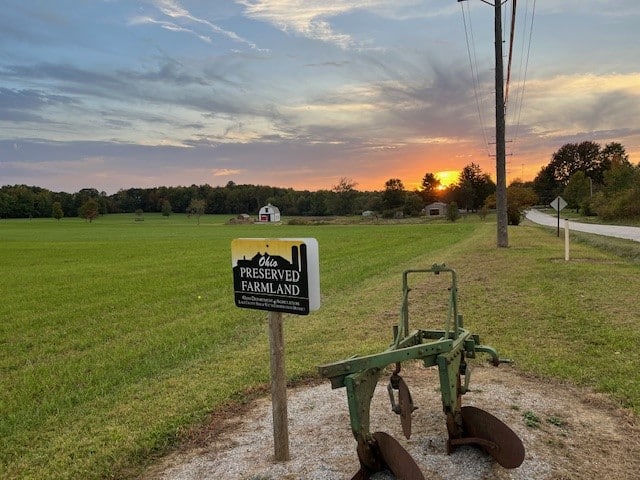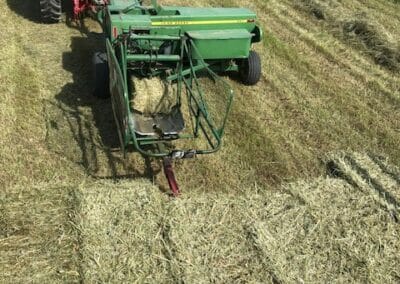- Why did I put an agricultural easement on the family farm?
My grandparents bought this farm in the 1930’s and I wanted to make sure that the family farm was always going to be a farm or green space as the development pressure is coming. This piece of ground is very important to the family and the well-being of the Grand River Watershed. The variety of land and habitats on this ground are worth the protections. Wetlands, waterfalls, Native Ohio Hardwood Forest all leading to the Grand River. The agricultural operation and forest management are beneficial monetarily and environmentally to the farm and family.
- How has this influenced my neighbors?
My neighbors have seen the Protected Farmland sign in my field and have stopped to ask questions or see what enhancements and improvements I have made or am doing to the farm. It has given me the chance to show the landowners around me techniques and invasive species control to improve the quality of wetland and wood land habitat which in turn makes cleaner healthier streams and rivers. With the Grand River being one of Ohio’s only Wild and Scenic Rivers and steelhead trout spawning and native mussel habitat it is an important resource that deserves care and protection. Most of them did not realize the bushes and plants in the woods did not belong there and once the treatment of these invasives starts the wildlife and native plants come back making the land the way it should be. Native pollinator plants are beautiful and flourish where they are supposed to be.
- Has the easement had any effects on the family?
The easement program has made family planning with the farm easier. There will be no infighting over the land selling/development because it is already decided and set in motion with the whole family in agreement. Even though I am the owner it’s still family land.
- Describe positives of the easement.
The positive results of having the Agricultural easement on the property is the freeing up funds to put back into the operation and the resources from the state. The state DNR and USDA have funds that are available to Ag land and easement owners to help put back into the land. So having the easement has opened more doors and resources to the farm and family. The community will benefit from the non-development by having less pavement and roofs so plants and trees can do the thing they were meant to do: slow the flow of water and keep sediment down in the waterways. That’s beneficial to the fish and invertebrates having cool clear clean water to reproduce in. Healthy forests equal healthy fish.
- Describe how it may have changed the operation.
The farm was a grain and hay farm. We have switched to pure grass land to keep tillage down and soil health up and focus on wildlife and the betterment of the woodland. With all the invasive insects attacking our trees having healthier the trees gives the woods better resistance to these threats. We have a consulting forester who has written a plan to achieve the goals that the family has put forth for the land. Conservation of land is an active thing to work with nature, not just let it be for things that should not be in your woods to take over and ruin the native flora and in turn hurt the fauna that rely on certain plants.

















